In German colloquial language, there is the jokingly derogative term “Warmduscher”, indicating a person who prefers warm to cold showers (the efficiency of the German language in using such a short term to describe what requires a whole sentence in English is not quite matched by the German record in winning world wars). If the birds were Germans, Siberian Rubythroats wintering in Xishuangbanna (where I saw them a few years ago) would certainly be described as “Warmduscher” by their fellow species members seen in Shanghai this month.
Note the nice bright color of the birds (indeed, there were three male Siberian Rubythroats at the same spot) even in winter.


And particularly compared to this juvenile Greater Flamingo.
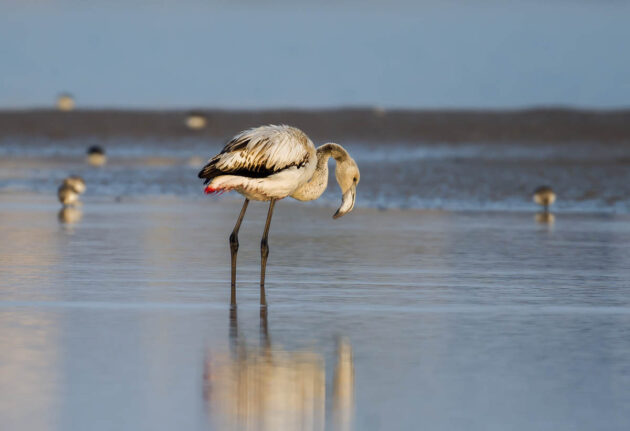
Shouldn’t it be pink, you ask? Apparently, the bright pink color of flamingos comes from beta-carotene, a red-orange pigment that’s found in high amounts within the algae, brine fly larvae, and brine shrimp that flamingos eat in their wetland environment (source). So, no beta-carotene, no pink color.

Also as a video, in which it seems to walk with a lot of purpose – only to stop a bit later and resume its roosting position.

Some Common Rosefinches winter in Shanghai every year – and the color of the male birds compensates for the lack of pink in the flamingo.

Apparently, if you are a younger male Common Rosefinch, your plumage betrays you as a younger and thus presumably less desirable mate (says the author of this post, who while thinking of himself as middle-aged is already definitely on the wrong side of the age 50).

So, what to do? One solution is to sing faster and take shorter breaks, which young male Common Rosefinches apparently do. As the source explains: “The higher singing rate of yearling males is probably a form of compensation for lower age (male quality), which may be important in finding a mate or avoiding aggression from older males.”

Not a problem for the female, I guess. Then, people would probably not want to watch videos of females.
It seems that like me, Oriental Storks are not that fond of humans. A study found that in areas with intense human activity, their nests were higher, while in safer environments, the nests were lower and closer to food resources, allowing parent storks to invest more in the nestlings.

Another study also found that human disturbance was the main negative factor affecting the Oriental Stork’s selection of nests.

That matters because Oriental Storks – once fairly common – are now listed as Endangered, with Birdlife International estimating the world population at 1000–2499 mature individuals (meaning the three individuals I saw represent 0.1% to 0.3% of the total, a sobering thought).

For some reason, Merlins are a rare sight in Shanghai – these are the best photos I have of the species so far.

Finding scientific research related to the species online is difficult as the word Merlin is used for so many other things as well – a bird ID app, a wizard (e.g., “A typical depiction of Merlin tends to be of an old, cloaked wizard with a long white beard.”), etc. …

Like most humans, Merlins are “seasonally monogamous” (source) – for some reason, I have always been vaguely fascinated by the almost-self-contradictory term of “serial monogamy”, and it seems it is a term that applies to the Merlin as well. A video is here.
While the Speckled Piculet is described as being uncommon in China, it seems to have a fairly established presence at Tianmashan, Shanghai – presumably due to the extensive bamboo there (and maybe because the bird has gotten somewhat tolerant of noisy Chinese tourists).

I have no idea why the species’ name is innominatus (“unnamed”) though – it seems almost like one of these logical puzzles (if you name something as “unnamed”, is it really still unnamed? All Cretans are liars, says the Cretan?)


The Eurasian Bittern is very good at pretending to be a lifeless piece of wood – a quality that is useful for the species but did not do much for me on the occasion of my first few job interviews some decades ago.

Any Eurasian Bitterns following this blog (as I think they should) might be interested to learn about successful nest-building locations: “nests built over deep water and in dense vegetation had the best chances of survival” (source is this, rather than the more popular “7 Habits of Highly Successful Eurasian Bitterns”).

Another source advises Eurasian Bitterns against having too many chicks: “Nestlings in broods of two and three grew faster than those from broods of four and five”. US parents saving for the college education of multiple kids surely will be able to relate.

eBird calls the Eurasian Woodcock a “bizarre and cumbersome-looking relative of the snipes”, which is a pretty good description, I think.

eBird goes on to notice the Eurasian Woodcock‘s “fat body” – a bit more respect for the species would have been appreciated …

I will not comment on the differences between the American and the Eurasian Woodcock, as my previous comparison between sunbirds and hummingbirds (“Sunbirds are basically hummingbirds without any danger of Trumpism or MAGA ideology”) already led to 10,000 Birds losing one esteemed reader, Dave R, who commented “Could’ve been an interesting article is ruined by the dumb, tired, hacky anti-American intro. You ought to know that there aren’t many Trump supporters in the American birding community, but if this is what you think I guess I’m no longer a reader.” Can’t afford to lose any more readers.

For those who want to see a video of the fast-paced life of Eurasian Woodcocks, please see here.
It seems that Eurasian Spoonbills are very specific about the water depth in which to forage. One study found that they had higher foraging success rates in areas with a water depth of 28.1-36.6 cm compared to other areas and preferred to forage in these areas.

Of course, this is a factor that makes the specific situation at a given lake (like Poyang Lake in China) so relevant to them.

Science proving the obvious again, part 78: Eurasian Spoonbills preferred departing from one of their stopover sites when tailwind conditions were good.

One Black-faced Spoonbill sneaked in as well (also in one of the photos above). No obvious racism there. Well, they are birds, not humans. Videos here and here.
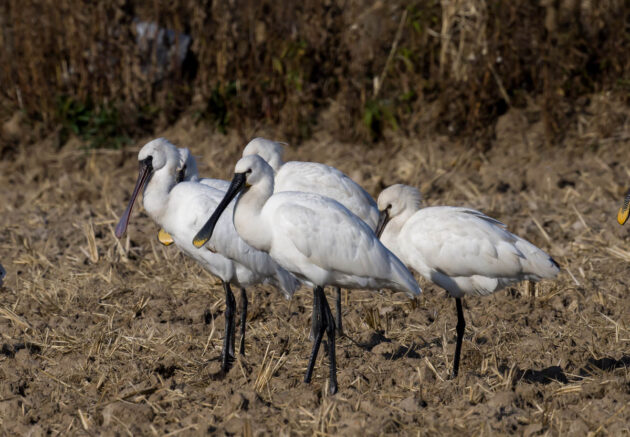
Some professional conspiracy theorists claim that there are no birds anymore and that they have all been replaced by government drones. One of the alleged proofs is that these drones often land on power lines to recharge their batteries. Of course, this is not true. I personally spoke to this Common Kestrel and the bird assured me it was not a drone but rather needed electricity to recharge its mobile phone.

As common when the writer is too tired and/or has nothing new to say about some nevertheless attractive or interesting species seen this month, here is a little photo gallery to end the post.
White’s Thrush

Blue Rock Thrush


A few buntings: Yellow-browed Bunting

Tristram’s Bunting


Rustic Bunting


Hooded Crane


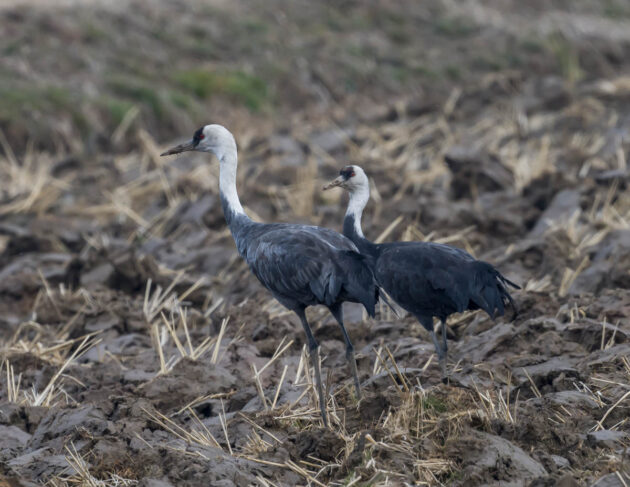

Grey-capped Greenfinch

Northern Lapwing


Silver-throated Bushtit


Black-throated Bushtit

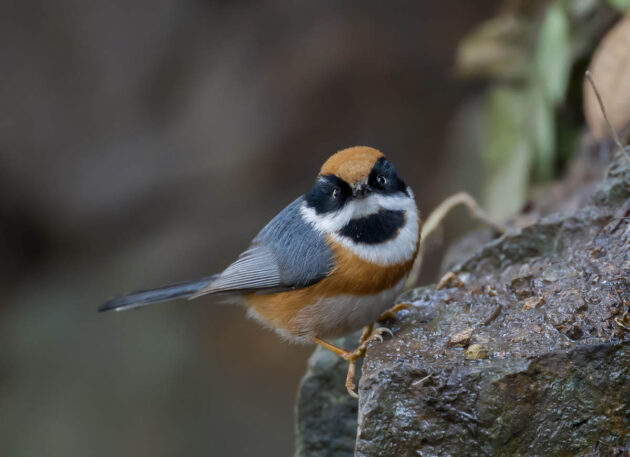
Eastern Yellow Wagtail


Pied Avocet (in winter)

Common Greenshank (also as video)

Spotted Redshank (also as video)

And finally, some more raptors: Crested Goshawk
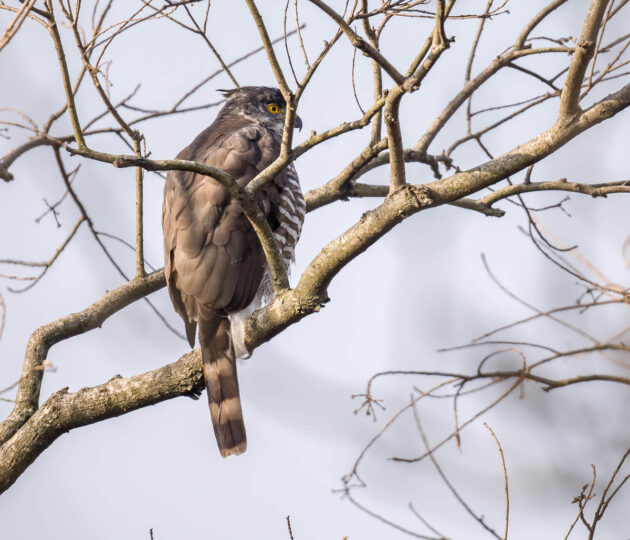
Black-winged Kite
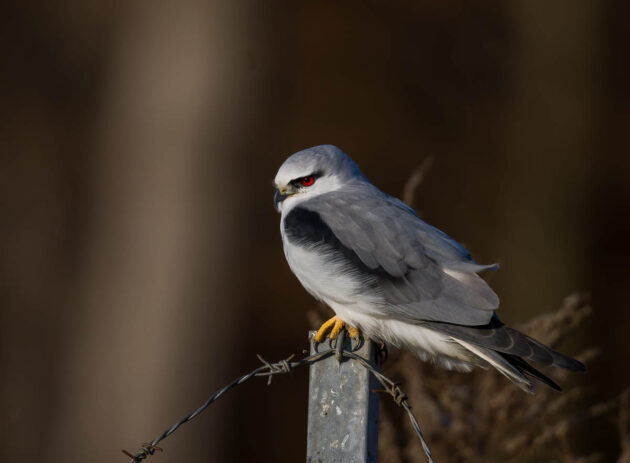
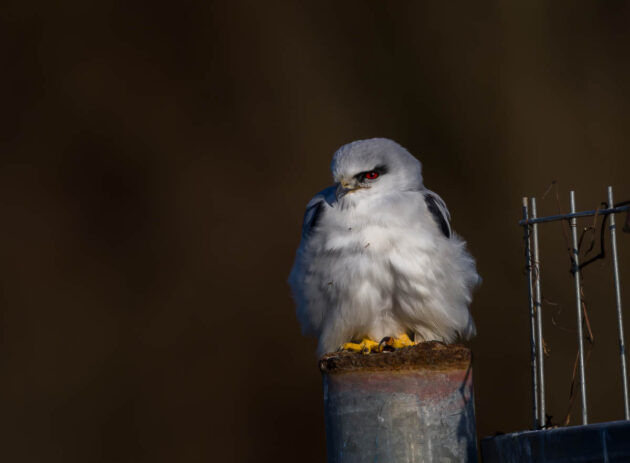
Upland Buzzard
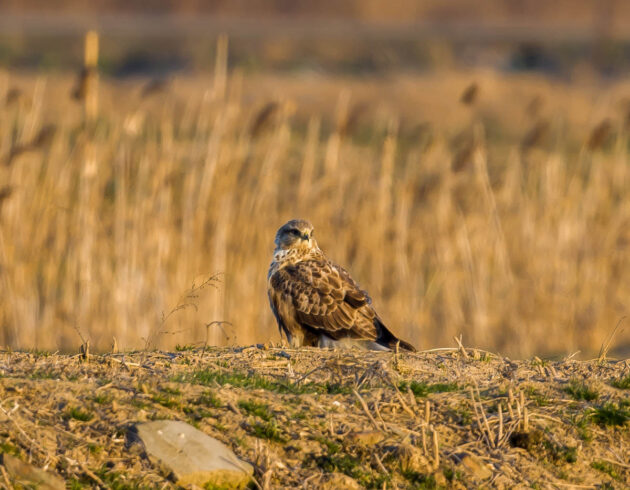
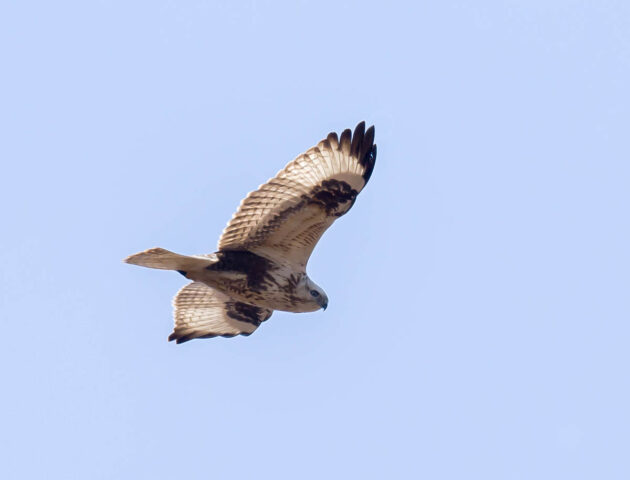

Peregrine Falcon


Source link

